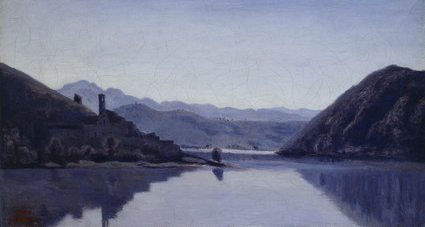Charles Baudelaire thought that ''Monsieur Camille Corot has the devil too seldom within him''. The modest Corot exhibition currently at Manchester City Art Gallery would probably not have changed his mind. Ranging from the small, lucid Italian landscapes of his early maturity to the large, twilit pastorals of his later years, it could be said to document the artist's progression from one form of serenity to another. But maybe all is not as quite as calm and resolved as it looks. Corot did fairly frequently have the devil within him, even if it was not the sort of devil - like those of, say, Delacroix or Gericault - that leaps out at you from the canvas.
Corot went to Italy in 1825, when he was 29 years old, and stayed for three years. The works he produced there, which were almost exclusively oil sketches painted outdoors, are among the most remarkable landscape paintings of the nineteenth century. In The Island of San Bartolommeo, you find Corot observing the delicate and characteristic balance - between spontaneous observation and formal austerity - that could later make him seem a hero to artists as different as Monet and Braque. Corot's painting was conceived as a study, but despite that he has imparted a high seriousness, a solemn intent, quite at odds with its scale.
Quite how he did so is not easy to define. It is partly a matter of touch. Corot's dense, methodical application of paint - particularly in his handling of light and shade on the classical and medieval buildings - recalls the laying of tesserae in a mosaic. Everything, in that central group of buildings, is just so. He creates a shimmering field of paint, subordinated to the compositional dictates of a tight, tight geometry, which predicts the flattened pictorial...


